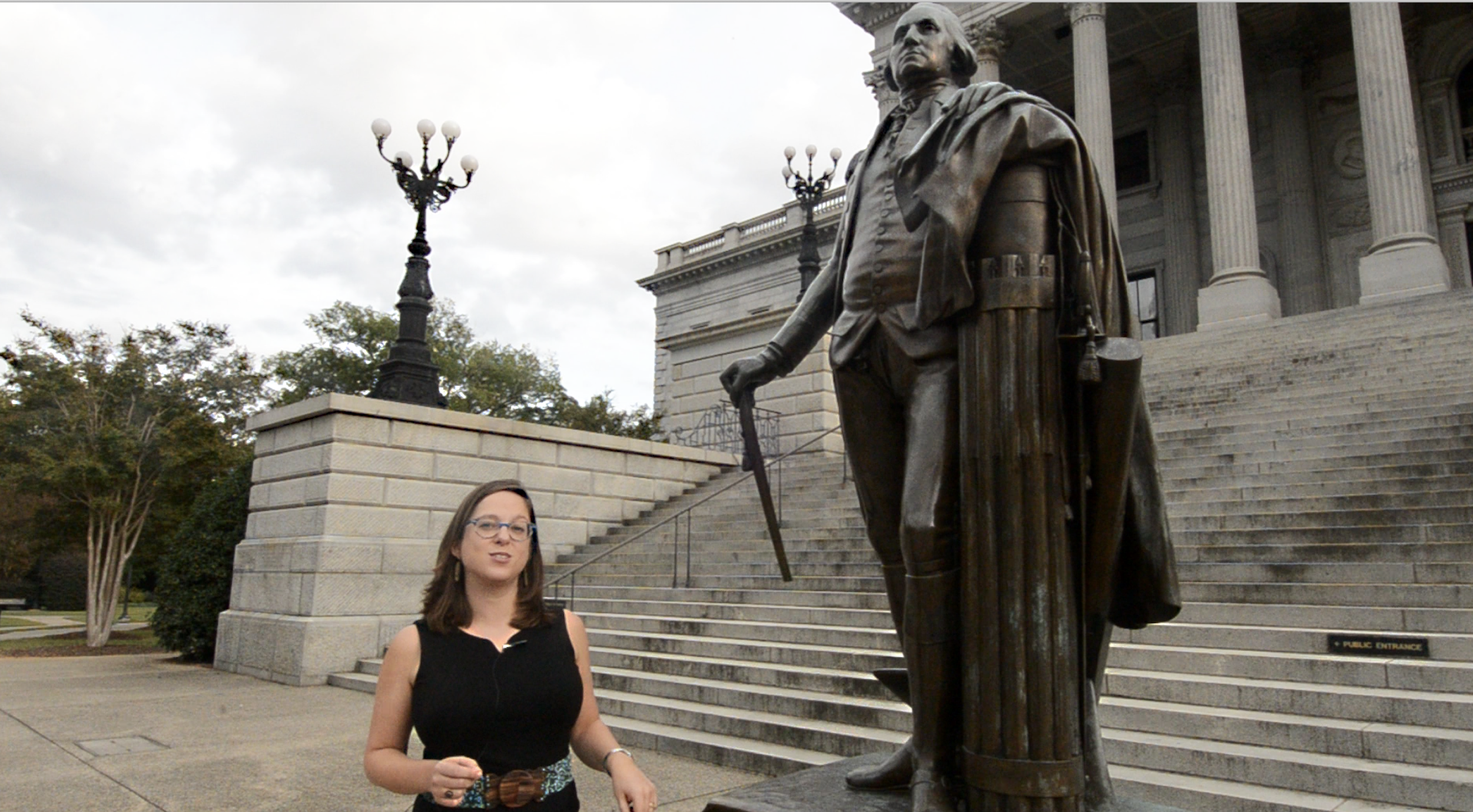Historic Columbia launches ‘Historically Complex’ podcast series about the South Carolina State House grounds
February 18, 2021Historic Columbia has launched a new podcast series. “Historically Complex” is a four-episode introduction to the layered history of the South Carolina State House grounds.
Dr. Lydia Mattice Brandt, associate professor of architectural history and art history at the University of South Carolina (UofSC), is the experienced voice and guide of this narrative-style podcast. A longtime ally to HC through her extensive research on monuments – including the web-based monuments tour launched in 2019 – Brandt is once again presenting on the subject.
 Turn the series on in the car, house, or, ideally, while walking the State House grounds and listen to Brandt as she positions each monument in its historical moment. Each episode helps listeners understand the motivation behind the development of key structures featured on the State House grounds. What did these monuments mean to those who selected, commissioned, made, funded, and supported them?
Turn the series on in the car, house, or, ideally, while walking the State House grounds and listen to Brandt as she positions each monument in its historical moment. Each episode helps listeners understand the motivation behind the development of key structures featured on the State House grounds. What did these monuments mean to those who selected, commissioned, made, funded, and supported them?
This podcast series is another tool in Historic Columbia’s efforts to drive conversations about the grounds and how historic places are interpreted in the community. While the podcast doesn’t take a position on what listeners should think or what should happen to the monuments themselves, it does take the view that monuments often tell us more about the moment in which they were erected than the historical person or moment that they commemorate. Since Columbia’s founding in 1786, the grounds of the South Carolina State House have grown from a four-acre site bounded by Richardson (Main), Gervais, Assembly and Senate streets into a 22-acre complex featuring seven buildings and more than 30 monuments. South Carolinians have constructed, altered and reconsidered this space for more than 230 years — and continue to do so today.
“Historically Complex” episodes, available to stream or download on most podcast services, are 8-14 minutes in length with the following focuses:
- Episode 1 presents an overview of the State House grounds, asking what purposes the grounds serve and for whom. Brandt introduces the overall intent of the podcast: to understand what monuments mean through an analysis of the monument and an examination of the history of those who built and paid for them.
- Episode 2 examines the origins of the State House between the 18th century and the Civil War. Brandt sheds light on the first statue on the grounds – the George Washington Monument – and the ways in which South Carolina politicians used the State House and art to argue for the righteousness of slavery.
- Episode 3 discusses the construction of the State House in the 1850s. Brandt contextualizes the building — and the sculptures by Henry Kirke Brown on the north side of the building — with the politics of the era.
- Episode 4 focuses on Reconstruction Era South Carolina following the end of the Civil War. This episode includes a look into the Confederate Monument and the construction of narratives of white supremacy, including the Benjamin Ryan Tillman Monument.
The podcast, produced by Jake Erwin (also, the composer of the podcast’s original music), was made possible through a grant from South Carolina Humanities, which also funded the original web-based and guided tours. Download or stream “Historically Complex” episodes on iTunes, Stitcher, Spotify or on Historic Columbia’s website. Brandt’s research presented in the podcast and online tour (supported by a historic preservation grant from the Richland County Conservation Commission) resulted from two years of thorough research in archival records, newspapers, speeches, maps, drawings and more.
Further information on the podcast is available at historiccolumbia.org/podcast. Listeners to the podcast can refer to the online tour at historiccolumbia.org/monuments to view images and other information while listening.
About Dr. Brandt
Dr. Lydia Mattice Brandt’s new book The South Carolina State House Grounds: A Guidebook will be available in May. The book is the first comprehensive narrative of this important site at the heart of the Palmetto State. In it, Brandt details the history of the state capitol and its setting — including the national, state and local histories enshrined in its monuments from 1787 to the present. Brandt argues that generations of private citizens and elected officials, who recognized the power of erecting public monuments and buildings that recall certain versions of history, have consciously shaped this highly charged, visible and public place to assert authority over both the past and present. By recounting the intentions behind each element in the landscape, this guidebook considers how South Carolinians have used this place as a site of storytelling and mythmaking. The University of South Carolina Press is taking pre-orders now.
Brandt teaches the history of architecture, American art, and the theories and methods of preservation at UofSC. Her other publications include First in the Homes of His Countrymen: George Washington’s Mount Vernon in the American Imagination (University of Virginia Press, 2016) and “Report from the Field: An Introduction to Making Architecture Matter” (published in The Public Historian in November 2020).
Brandt has been a member of Historic Columbia’s preservation committee since 2017.
About Historic Columbia
In November 1961, a small group of visionary citizens intent on saving the Ainsley Hall House from demolition officially incorporated as the Historic Columbia Foundation. Over the next six decades the organization, which was founded on the premise of preservation and education, would assume the stewardship of seven historic properties in Richland County. Today, the organization serves as a model for local preservation efforts and interpretation of local history. Visit historiccolumbia.org or find us on Twitter, Facebook, Instagram or YouTube.


















